When Jim Crow Lived In Wisconsin
Share
Explore Our Galleries
Breaking News!
Today's news and culture by Black and other reporters in the Black and mainstream media.
Ways to Support ABHM?
Produced By: Justus Selah & Dr. Fran Kaplan
Click on a postcard.

Just The Goods

TO: Rev. J. Chylinski, The Cathedral
“All the time Swell – N. Crandon. You see I am still in the state. Will close here Fri. and go to St. Paul. Hope you are well.”
On A Wild Goose Chase
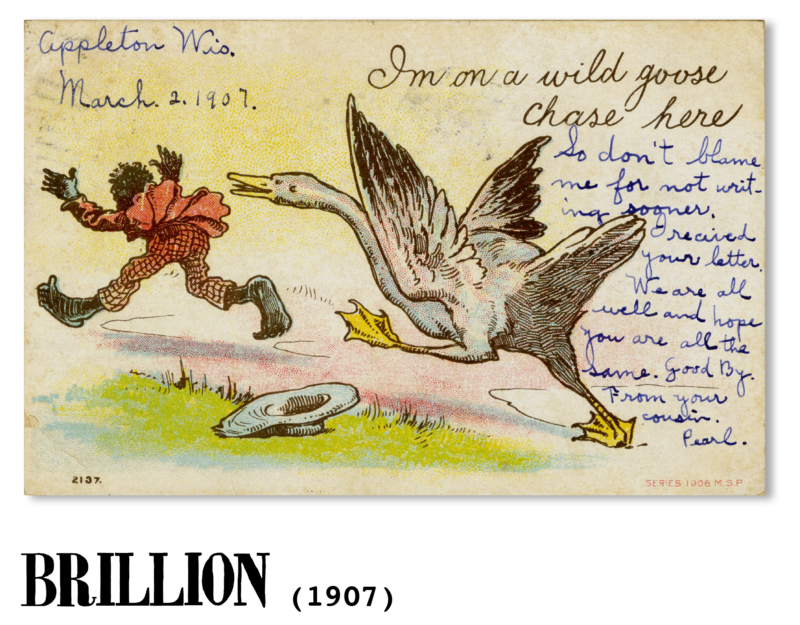
TO: Amelia Zick
“So don’t blame me for not writing sooner. I recived your letter. We are all well and hope you are all the same. Good by. From your cousin. Pearl.”
Music Hath Charm

TO: Mr. & Mrs. Walter Baryenbruch
“Hi Folks: Just pulled into “Fort Bragg’ N.C., has 73,000 men here. We saw snow for the first time to-day, is plenty cold here too. We made over 1,000 miles so far. Start out 5 A.M.. every morning. Hows everyone? Orville.”
Kept Here
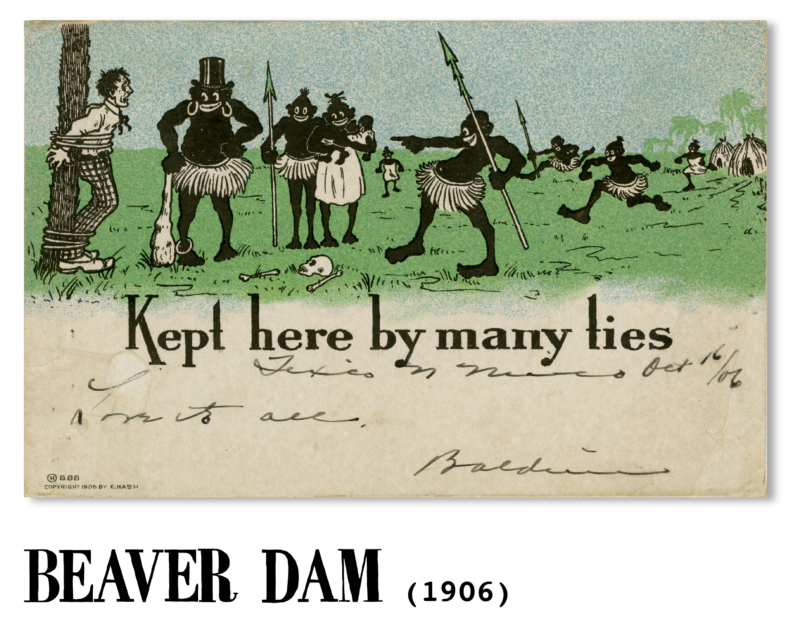
Living Easy
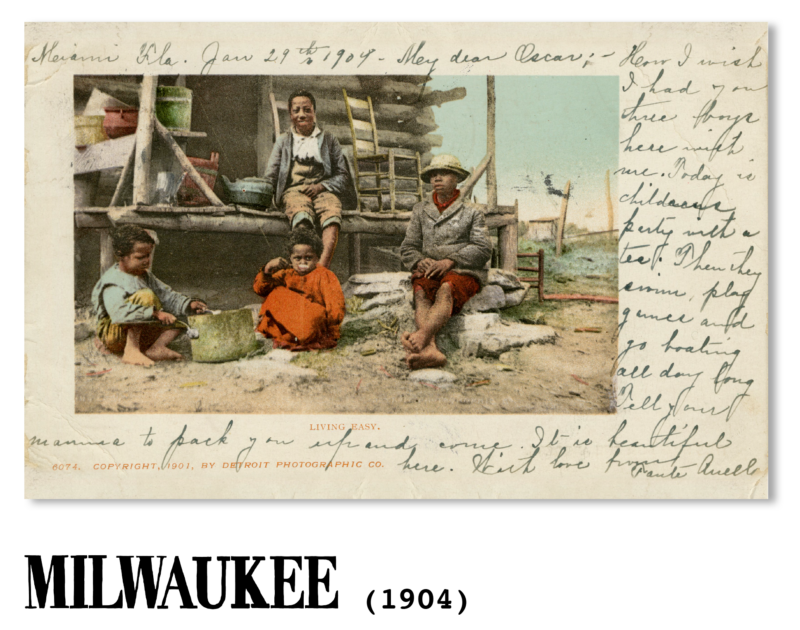
TO: Master Oscar Schmidt
“Miami Florida, January 29th, 1904. My dear Oscar, How I wish I had you three boys with me. Today is children’s party with a tea. Then they swim, play games, and go boating all day long. Tell your mamma to pack you up and come. It is beautiful here. With love from Tante Ruella"
Seven-up
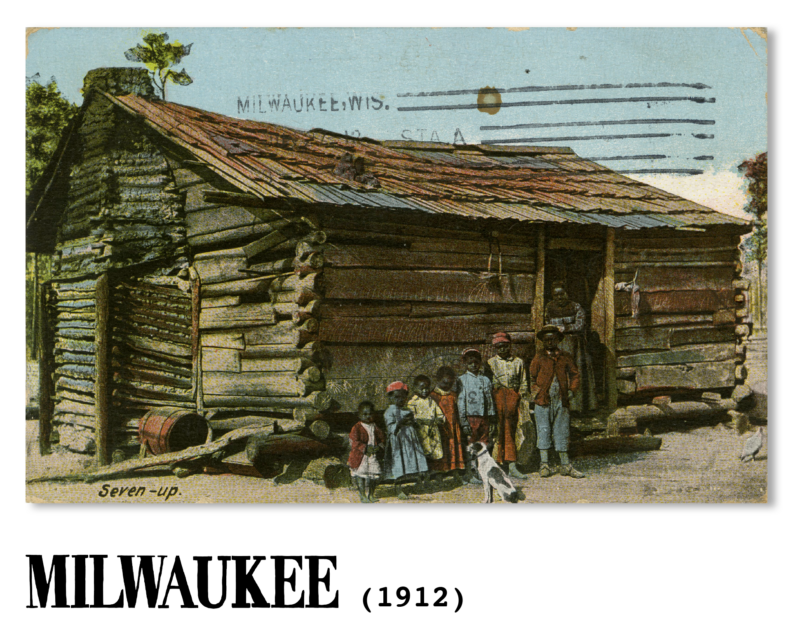
TO: Mr. Leo Demlow
“Dear Sir:- Thanking you for your card. I remain- Curt Minkley, Manatee Fla.”
He'p Yo'se'f To Grapefruit
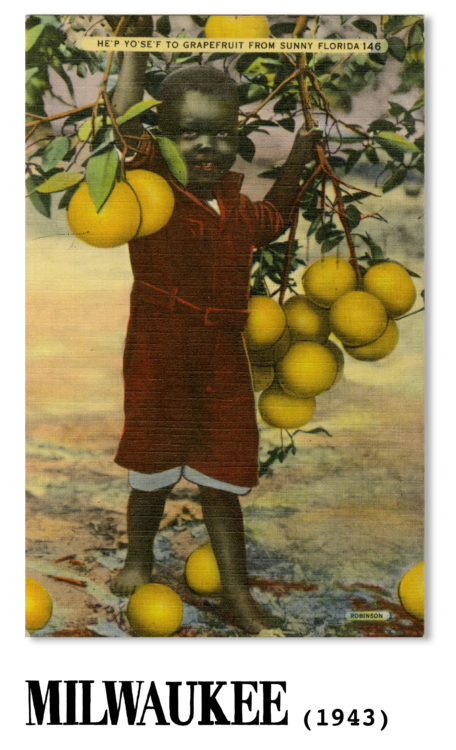
TO: Miss Audrey Krueger
“Dear Audrey, here’s some grapefruit isn’t it lovely the way it grows, its so delicious real juicy. There are such big (..?..) and so good. (..?..) will sure hate (..?..) – Love Mom.”
Cotton Picking
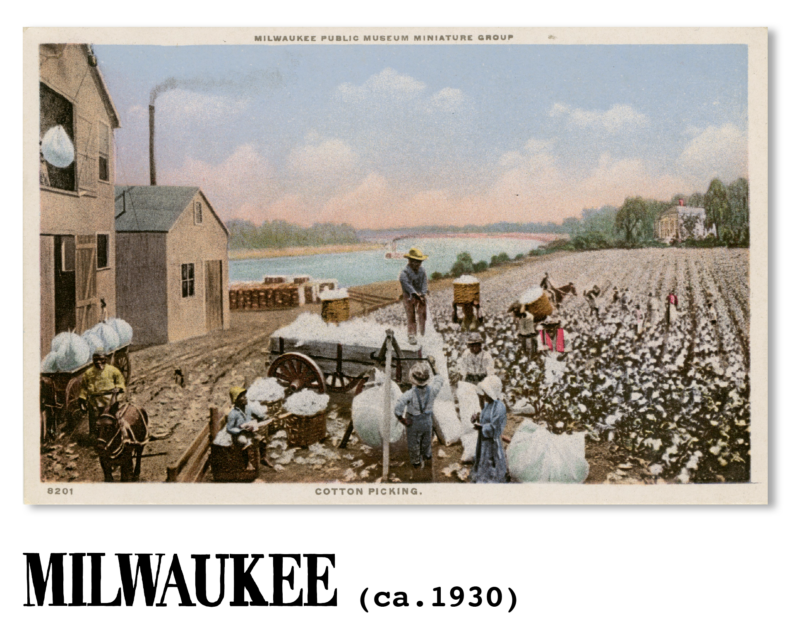
Milwaukee Public Museum souvenir
COTTON PICKING. One of the greatest industries of America is the raising and weaving of cotton. The former built up our southern states and is still one of the chief sources of wealth….This group depicts a typical cotton harvesting scene in Mississippi. [Curator’s Note: This group likely consisted of enslaved or sharecropping black people whose exploited labor made the wealth from cotton possible.]
In The Land of King Cotton

TO: Mr Leland Birchard
“Well Leland I am down among the coons now but I still have a good-time write soon I am Kraak c/o C. Kraak, Fairhope Baldwin, Ala”
In 2019, these postcards were found among hundreds of similar postcards at an antiques store in an exurb near Milwaukee. New and old Jim Crow objects are regularly sold today at yard sales and on websites.
What are these postcards?
These “Jim Crow” postcards were mailed to and from Wisconsin residents from 1904 to 1942. Their stereotyped pictures of African Americans were very common and accepted. Such cards were sent openly, without comment or embarrassment.
Who and What's "Jim Crow"?
Jim Crow is the common term for the "Nadir," the 100-year period after slavery ended. "Jim Crow" was named for a wildly popular, nationally-known “minstrel” character played by a White showman in blackface who mocked African Americans. During Jim Crow, White Americans imposed unjust laws and harsh social customs on Black Americans. They were not allowed to vote, attend quality schools, get decent housing and jobs, or use “White only” spaces such as public bathrooms and restaurants.
What can Jim Crow “collectibles” tell us today?
Many White people in the South and North enjoyed using such images in their homes on salt-shakers, artworks, and lawn ornaments. These “collectibles” reveal prejudiced views of African Americans. They supported Jim Crow laws and customs by picturing Black people as:
- Savages, criminals
- Stupid, not able to speak well
- Lazy, dirty, poor
- Having too many children
- Clownish, childlike
- Only fit to work as servants and field hands









Comments Are Welcome
Note: We moderate submissions in order to create a space for meaningful dialogue, a space where museum visitors – adults and youth –– can exchange informed, thoughtful, and relevant comments that add value to our exhibits.
Racial slurs, personal attacks, obscenity, profanity, and SHOUTING do not meet the above standard. Such comments are posted in the exhibit Hateful Speech. Commercial promotions, impersonations, and incoherent comments likewise fail to meet our goals, so will not be posted. Submissions longer than 120 words will be shortened.
See our full Comments Policy here.